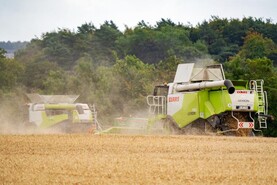Global C02 emissions could fall 5% this year as a result of the economic shutdown caused by the COVID-19 pandemic.
If realised, this would be the first time global carbon emissions have declined since the financial crisis of 2008 caused a 1.4% dip in emissions and the largest drop in C02 emissions in a single year since World War II.
Rob Jackson, chair of the Global Carbon Project, said the coronavirus-induced economic standstill in China, Europe and the US had one silver lining – emissions were falling.
“I wouldn't be shocked to see a 5% or more drop in carbon dioxide emissions this year, something not seen since the end of World War II. Neither the fall of the Soviet Union nor the various oil or savings and loan crises of the past 50 years are likely to have affected emissions the way this crisis is,” Jackson told news agency Reuters.
Air quality
With cars parked up, airplanes grounded, factories idled and demand for oil and coal on the floor, atmospheric scientists around the world have noticed a dramatic improvement in air quality in large cities such as Beijing and New York.
Speaking to the Irish Farmers Journal in March, Prof Róisín Commane, an atmospheric scientist and a native of Co Clare where she grew up on a sheep farm, says she has seen a 50% decline in carbon monoxide levels and a 10% decline in C02 levels in New York city where she lives.
With traffic levels down 35% since the COVID lockdown and energy-inefficient office buildings mostly emptied, New York’s air quality has improved almost instantly, according to Commane.
“Cars and trucks have a big impact as they produce a lot of the carbon monoxide in the air but New York is unusual because the buildings here also have a big impact,” said Commane.
“The heating infrastructure in most New York office buildings is so old that it causes huge emissions of carbon monoxide into the atmosphere. Up to 2015, most buildings were still being heated by burning high sulphur fuel oil, which is very damaging for air quality,” she added.






 This is a subscriber-only article
This is a subscriber-only article









SHARING OPTIONS: